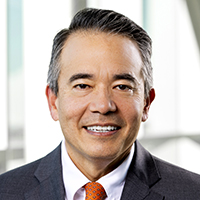The most effective way to fight cancer is to keep it from happening in the first place. And that’s a job for all of us.
About 2 million new cases of cancer were diagnosed in the United States last year, the National Cancer Institute (NCI) estimates. While the overall cancer death rate in the U.S. has declined in recent years, there were about 612,000 cancer deaths in the U.S. last year, the NCI says.
Yet while many cancers are caused by genetics or other uncontrollable risk factors, about four out of 10 cancer cases among adults and roughly half of cancer deaths are preventable, according to American Cancer Society (ACS) research. And mostly, that involves changing habits and making healthy choices. Smoking cigarettes alone is linked to 20% of all U.S. cancer cases and almost 30% of cancer-related deaths, says the American Association for Cancer Research (AACR).
Prevention is part of the core mission of the University of Colorado Cancer Center, Colorado’s only NCI-designated comprehensive cancer center, along with research, education, and world-class multidisciplinary care. The CU Cancer Center’s Cancer Prevention and Control Program applies the expertise of behavioral, basic, and clinician scientists to conduct innovative and impactful cancer research that reduces Colorado’s cancer burden.
Richard Schulick, MD, MBA, director of the CU Cancer Center and chair of the CU Department of Surgery, says there are “three key principles in cancer care: Prevention is best, early detection saves lives, and effective treatment is key. Catching cancer early leads to better outcomes, improved therapy plans, and higher chances of curing.”
February is National Cancer Prevention Month, so here we offer 10 key ways to prevent cancer, drawn from publications of the CU Cancer Center, the NCI, the ACS, the AACR, and other sources.
And to help us understand why these steps are so vital in preventing cancer, we turned to the co-leaders of the Cancer Prevention and Control Program at the CU Cancer Center: Stacy Fischer, MD, professor in the CU Division of General Internal Medicine; and Jamie Studts, PhD, professor in the CU Division of Medical Oncology.
“Prevention is a vital and underutilized piece of the cancer puzzle,” Studts says. “Sometimes behavior change can be hard. But whether it’s changing your diet, increasing your physical activity, applying sunscreen, or reducing other kinds of risks and exposures, it’s the hard stuff that can be very effective.”





